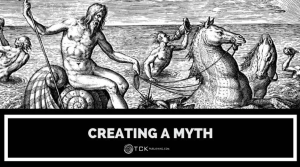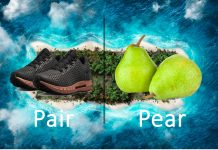Recently, a case came before the Delhi High Court concerning two marks Avatar and Avathar. The latter is a composite mark consisting of the word – AVATHAR in English and Tamil, with the sketch of the face of a lady alongside (see the image below).

The issue arose when the Senior Examiner rejected the application of the Appellant (i.e. “Avatar” mark) and disallowed its registration under Section 11(1) of the Trade Marks Act on the ground that it was visually and phonetically similar to the cited mark i.e. Avathar. Favouring the Appellant, the Court held that the Senior Examiner erred in rejecting the appellant’s application and directed the registrar to advertise the mark and proceed. The Court interpreted Section 11(1) noting that “[m]ere phonetic similarity is insufficient to render the marks identical or similar within the meaning of Section 11(1).” As per the Court, similarity/identicality (of marks and respective goods) should be such that it causes confusion to consumers. It further clarified that marks are to be compared as a whole.
What piques my interest is (the cliche!) that marks are to be compared as a whole (“Anti Dissection Rule” as some say). This is not the first case to say so, undoubtedly. But what wonders me is: is there anything like “comparison in whole.” Isn’t it a mere “reification” of an abstract idea? The post aims to analyse this question. Before I advance my averments, it needs to be flagged that the Court’s holding inheres an invisible psychologizing about how consumers “think” and how they “act.” My attempt is to visibilize that psychologizing and expose the un/under-addressed assumptions that legitimise the “comparison in whole” idea.
AIIR, Anti-Dissection Rule, AIIR, and Abstractness?
South India Beverages vs General Mills Marketing explains the Anti-Dissection rule as the one that “mandates that the Courts whilst dealing with cases of trademark infringement involving composite marks, must consider the composite marks in their entirety as an indivisible whole rather than truncating or dissecting them into its component parts and make comparison with the corresponding parts of a rival mark to determine the likelihood of confusion.”
What this means is that a composite mark (like “AVATHAR” in the present case) cannot be dissected and then compared. All elements of it are to be taken and compared in toto as the individual elements like the Tamil inscription of “AVATHAR” or the picture of the lady are not registered. This “Anti-Dissection” Rule, though not mentioned verbatim, derives its authority from Section 17 of the Trademark Act, 1999. However, as Stiefel Laborataries v. Ajanta Pharma confirms, this rule is grounded on an assumption about Indian consumers: “an average purchaser does not retain all the details of a mark, but rather the mental impression of the mark creates in its totality.”
In sum, there exists a mythical (wo)man of “Average Intelligence with Imperfect Recollection” (“AIIR”), whose eyes are hypothetically harnessed by a judge (or whoever claims to compare). Tis the rub: AIIR is where circulatory reasoning comes in.
Tellingly, the idea that marks are to be compared as a whole, underlies two unanswered (or auto-answered) queries: how does “comparison” happen? And what constitutes the “whole” in that comparison? In simple words, what wonders me is, is “whole” to be understood literally i.e. the whole mark, e.g. “Raja Hindustani Kachori” or “Chacha Hindustani Kachori”? If that’s the case, then how is “Raja Hindustani Kachori” to be compared with “Chacha Hindustani Kachori”? Here, what will be the “whole” that the consumers will remember and that the Judges should compare?
As a “whole”, the above hypothetical marks are different, the former focusing on “Raja” and the “latter” emphasizing “Chacha.” Taking the “whole” seriously, two marks won’t be similar unless we consider “Hindustani Kachori” as something common for both. But with such a consideration … “whole” ceases to be a “whole” in the literal sense and shifts toward “something” that grabs the “first attention” i.e., “Hindustani Kachori.” This understanding flows from the above assumption that a consumer cannot remember each element of the mark given the consumer’s AIIR. After all, how can “imperfect” recollection have a perfect “whole” image? Taking another example, what this suggests is that between two marks like GASPAR vs GASPAR’S ALE; a consumer will ultimately remember “GASPAR.” and that is what constitutes “whole.”
(Undoubtedly, we can’t precisely say “what” attracts consumers’ attention – Raja/Chacha, Hindustani, Kachaori or all together. But given “averageness” and “imperfection” is the focus, it won’t be a gaffe to assume that common elements should be first to get attention.)
This way the “whole” is not the “whole” literally but only the “dominant mark”, a kindred of the anti-dissection rule. Some courts have also spoken about this dominant mark rule but as a separate rule. Sample this Stiefel Laborataries case which remarked that “It has been held to be a violation of the anti-dissection rule to focus upon the “prominent‟ feature of a mark and decide likely confusion solely upon that feature, ignoring all other elements of the mark.” This suggests that the “anti-dissection” rule is independent of the “dominant mark” rule; but given what I underscored above, that seems to be incorrect.
Of course, like (m)any other legal thing, we can fix this falsity too. All we need to do is add another rule or assumption to our reasoning to legitimize the artificial distinction. So far, we wandered around “confusion” let’s add something like “deception by the defendant” or “deceptive similarity.” As I understand, there can be a potential overlap here between deception and confusion, but the term “deception” (or any rule underlying it) brings the “intention” of the defendant to the fore making the case more serious and crime-ish. I don’t say these terms remain nonexistent, they exist and work in the background surely. By mentioning it/them explicitly, we create a new legal pillar to tether our understanding. The focus, here, is to highlight how our legal “choice” and reliance on those choices lend the necessary sense to our argument and shape (or sap) the conclusion of a case.
With new rules and legal terms, we embiggen our ground to play around with our favourite facts, cherrypick them, tie them with whatever-given or apparently-applicable law, and conclude.
I don’t say only judges do it, though they do it unconsciously or consciously. Lawyers, law students, and law professors, clients all paddle their “perspectives” of law under the ruse of “their” legal reasoning. In case nothing works out or seems convincing enough to work out, we can bring our legal Brahmanstra – the weaselling weapon of “balancing interests” where all sides, rules, norms, and assumptions can come together to row our “reasoning.” We can speak of policy issues, which are more or less shaped our cpopular socio-legal consciousness of the time. Interestingly, there are various ways to wake this weapon, one interesting way is by presenting a positive “coinciding or converging image” and blurring the “contrasting” one.
For instance, in P K Overseas vs M/S Bhagwati Lecto, the Delhi High Court explicitly called it anti-dissection and dominant mark rules a “paradox”, but a paradox to a layman! It notes (paragraph 20) that “To a layman it may appear to be a legal paradox, for on the one hand there is a rule that you cannot dissect a composite mark and on the other hand you have a rule which has the feature of dissecting.” (But I fail to understand this uncalled focus on “layman”. If it’s actually a paradox, it’s for all. It’s just that law(wo)man can play with paradox.)
In P K Overseas case, the court then traces the answer or solution to the legal paradox in another case i.e. South India Beverages vs General Mills which does not actually solve the paradox but only obscures it by noting “principle of ‘anti dissection’ does not impose an absolute embargo upon the consideration of the constituent elements of a composite mark. The said elements may be viewed as a preliminary step on the way to an ultimate determination of probable customer reaction to the conflicting composites as a whole. Thus, the principle of ‘anti-dissection’ and identification of ‘dominant mark‘ are not antithetical to one another and if viewed in a holistic perspective, the said principles rather compliment each other.
If we look carefully, paradox never went away, it never existed. But this vague neutral-looking narrative of not-antithetical/complimentary not only fogs all the falsity of paradox. Instead, it opens up the space for future cases (and legal scholarship on the subject) to pander around the periphery at the cost of the centre i.e. to what extent trademark (or other IP rights in general) should be granted.
Conclusion Clarification!
I do not have any solution to bridge the above-mentioned gaps or have a reconstruction project to advance, at least at this point in time. Also, the purpose here is also not to discredit the judicial judgment around trademark law completely or reject the “comparison of marks” in its entirety. My aim is to underscore the structure of our legal thought and unfurl the furtive field that can be better worked upon by others.
Note: among many articles, the articles that I remember have shaped my thinking are:
- Peter Gabel, Reification in Legal Reasoning (1980).
- Duncan Kennedy, Freedom and Constraint in Adjudication: A Critical Phenomenology (1986).
- Duncan Kennedy, A Semiotics of Legal Argument (1994).
Image source: here



















